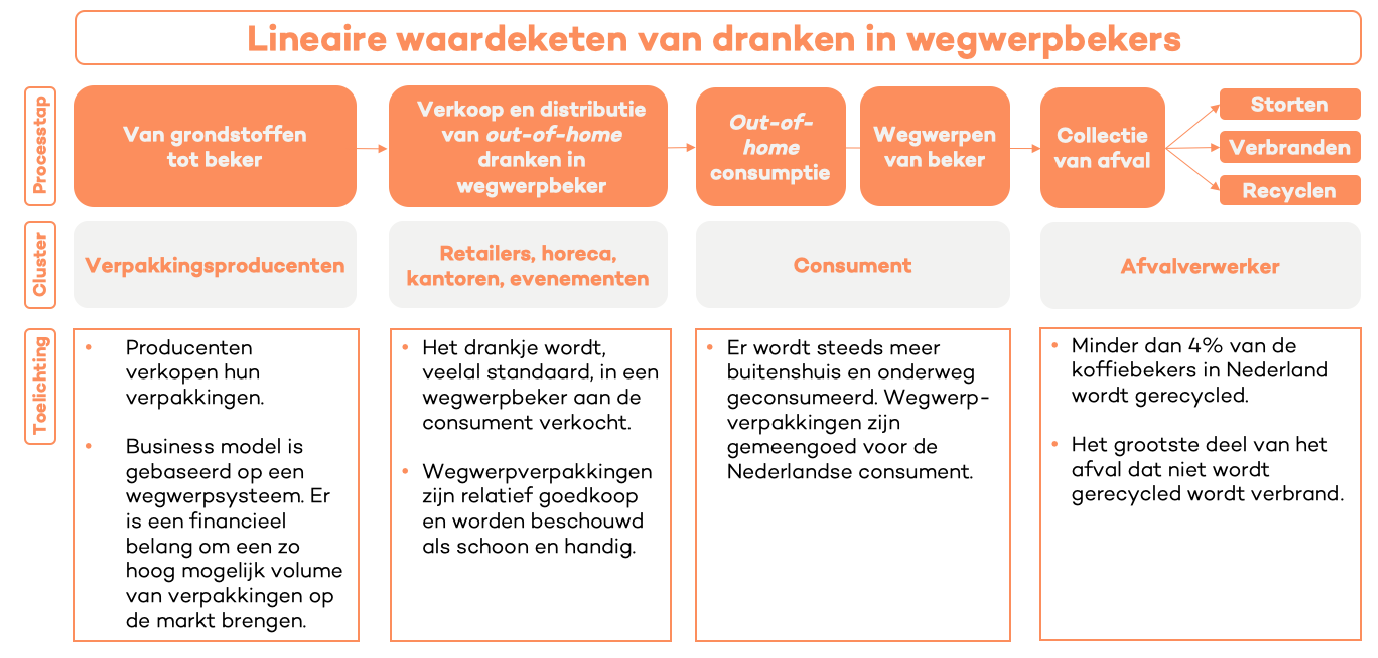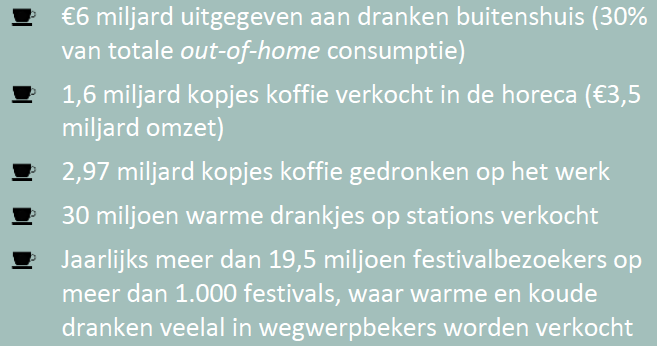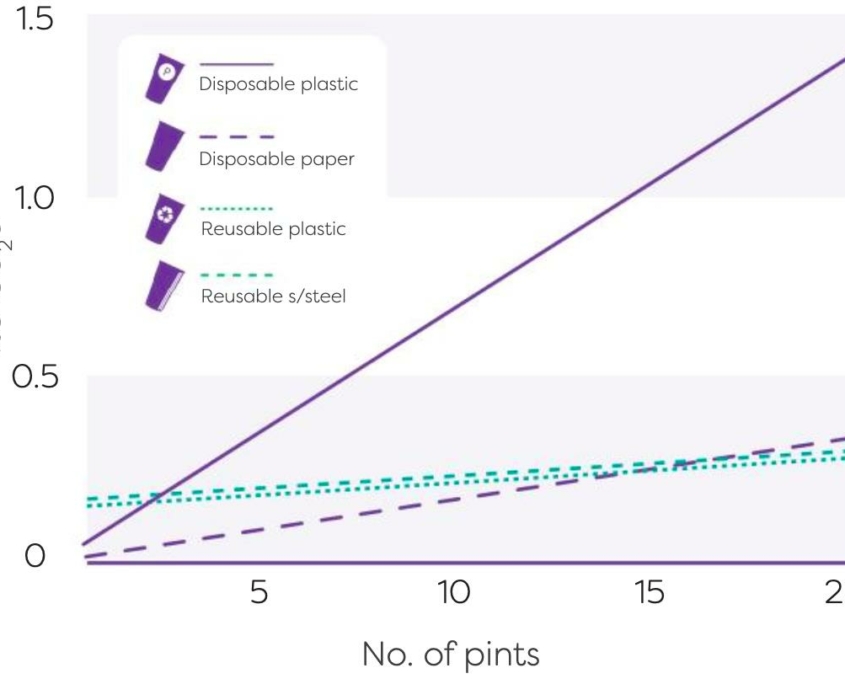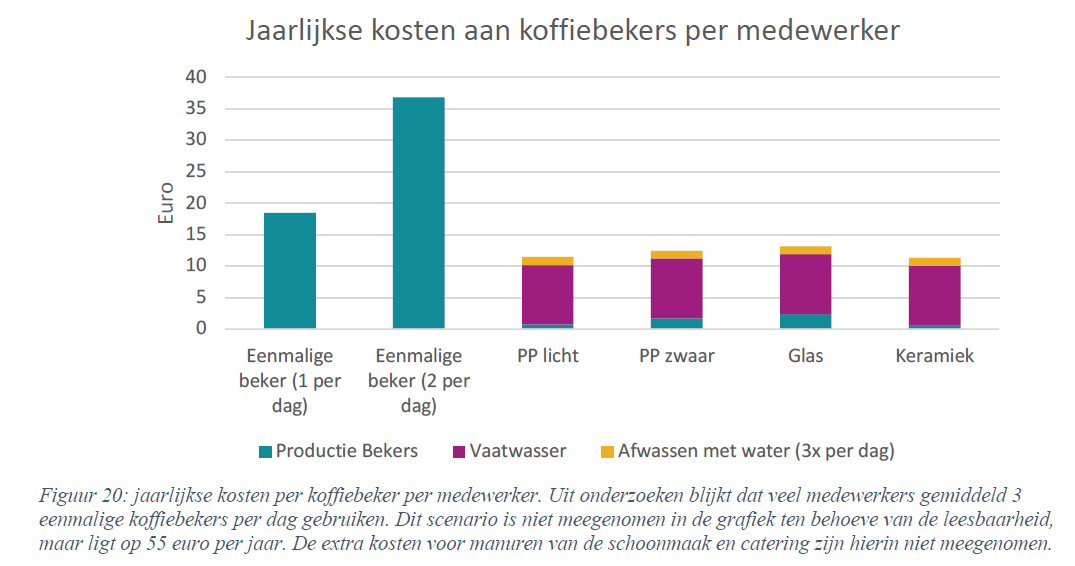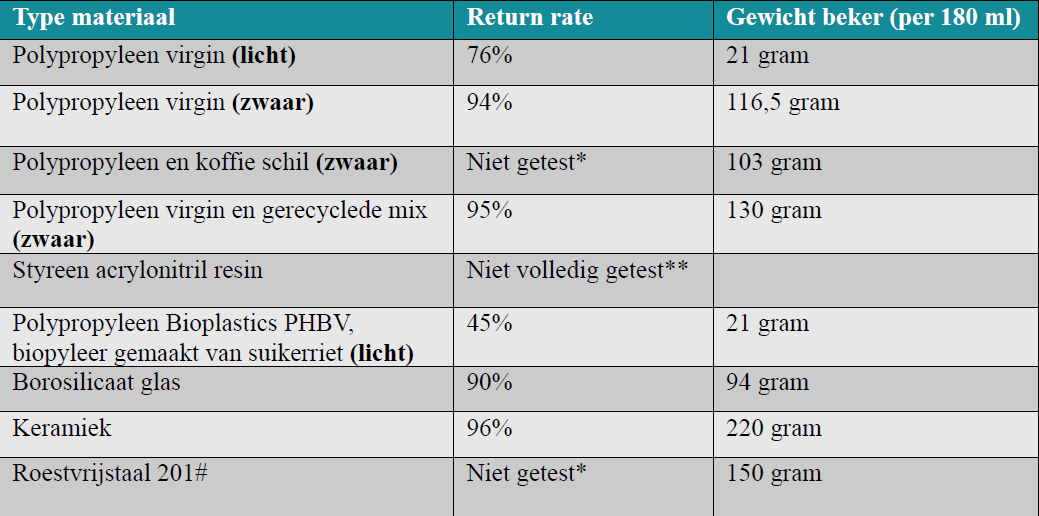Savings of Reusable Cups Compared to Disposable Cups
Get rid of throwaway culture, reuse is the new now
We live in a time when sustainability and environmental awareness are of paramount importance. The Netherlands has set ambitious goals for a circular economy by 2050. In this context, increasing attention is being paid to reducing the use of single-use packaging, especially in the world of out-of-home consumption. The first step to create a circular economy has been taken through the Single Use Plastics (SUP) legislation.
A notable example of single-use packaging is the disposable cup. These cups can be found everywhere, from festivals and coffee shops to offices and catering establishments. However, the use of disposable cups does not fit within the vision of a circular economy. They create significant problems, such as litter, limited recyclability and even export of waste.
But here is where reusable cups take the stage. A life-cycle assessment (LCA) shows that although reusable cups initially require more raw materials and energy, they quickly catch up positively in terms of environmental savings after repeated use. This critical point is called the tipping point.
Through some simple calculations, we demonstrate the environmental and financial benefits of purchasing reusable cups versus disposable ones.
The Tipping Point of reusable cups versus disposable cups
Several studies show that reusable cups have a lower environmental impact than disposable cups after a certain number of reuses. This varies depending on factors such as the material and the efficiency of return logistics. For example, some studies suggest that reusable plastic cups are more environmentally friendly than disposable cups after only two uses.
Daily Savings in Offices
Imagine an average-sized office serving 100 cups of coffee to employees and visitors every day. If this office switches to reusable cups, the office could save thousands of disposable cups on an annual basis. This equates to the savings in raw materials, energy and waste that would otherwise be associated with disposable cups.
An even more concrete example of how much you save is the following:
The reusable cup you will arrange for this person will cost about €10 which would already save you €45 per staff member per year, purely on the purchase cost of the cup.
This calculation shows:
- Using single-use cups is more expensive than reusable cups, especially if several cups are used per day.
The costs for reusable cups are mainly in washing (both rinsing and using dishwasher).
Of this, 95% is electricity consumption and 5% is water consumption. - There is little mutual difference in total costs (production cups and washing up) of reusable cups: between 11 and 13 euros per employee per year. This difference is caused by the difference in purchase costs and the return rate during use.
- As with the environmental impact of dishwashers (see impact dishwashing), power (kWh and liters of water per wash) and load capacity (number of cups per wash) affect the outcomes. For sustainable use of reusable cups (from both financial and environmental perspectives), the use of energy-efficient dishwashers is therefore important.
- One of the most important indicators of the degree of sustainability is the return rate. How many of the cups that are provided are also returned. The higher the return rate, the more cups come back.
When we put this Return rate alongside the cost per cup, as shown in the other figure, we can conclude that the heavy PP cups come out on top.
Annual Savings at Festivals:
Festivals are places where huge amounts of disposable cups are typically used. Imagine a festival with 50,000 visitors replacing 500,000 disposable cups with reusable ones every year. This means a significant reduction in environmental impact, and the prevention of huge amounts of waste.
These simple calculations show that switching to reusable cups provides significant savings. Whether in an office setting, a festival, or other out-of-home consumption, the environmental benefits of reusable cups are clear.
Disposable society is no longer sustainable, and we are at a crucial crossroads. It is time to embrace reusable cups and leave disposable cups behind. With every reusable cup we use, we contribute to a more sustainable future and to achieving the Netherlands' circular economy goals.
Herbruikbare bekers van Retulp
We helpen je graag bij de overstap naar herbruikbaar. Of je nu een bedrijf runt, een festival organiseert, of simpelweg op zoek bent naar duurzame oplossingen voor thuis en onderweg, Retulp heeft de oplossing. Door te kiezen voor onze herbruikbare bekers draag je bij aan het verminderen van afval en ondersteun je de doelen voor een circulaire economie. Neem eenvoudig contact met ons op en ontdek hoe je met Retulp een verschil kunt maken in de strijd tegen wegwerpplastic.


